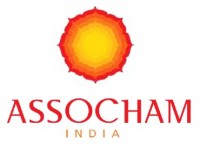
Prices of most of vegetables like potato, cabbage, chilly, tomato, cauliflower, brinjal and okra have seen a price rise between 20 and 100 per cent, hit by low arrivals of the harvest in the mandis during the April-July period of 2016 and what is most worrying is that the trend is visible during the peak season of production, an ASSOCHAM comprehensive study on vegetables noted.
At the retail level, potato store went up by over 100 per cent during April-July this year over the same period of 2015, cabbage (49.3 percent), chilly (47.8 percent), garlic (37.0 percent), cauliflower (33.9 percent), tomato local (26.0 percent), tomato hybrid (25.6 percent), potato fresh (25.0 percent), okra (22.3 percent), and brinjal round (20.8 percent).
The study which covered several mandis noted with concern, “it indicates a worrying situation where market arrivals of vegetables have recorded contraction despite being peak season for production. In the shorter horizon, there will be more pressure on the market arrivals of vegetables as production season eases”.
ASSOCHAM Secretary General Mr D S Rawat noted another worrying trend emerging out of the study. “There is a huge gap between retail and wholesale price of vegetables. On an all – India average, retailers are selling at more than 52.7 per cent of wholesale prices “.
The situation has been compounded by lower level of arrivals in the mandis, for the period under review.
As for the gap between the wholesale and retail prices, it is as much as over 75 in some cases like brinjal (round) and over 62 per cent for tomato (desi or local). Likewise, in terms of locational gaps, it is notoriously high by as much as over 80 per cent and places like Mumbai, Delhi and Patna while in several other cities, it is well over 50 per cent.
Lack of basic infrastructure puts further strain in the arrival of vegetables which results in more wastage of vegetables during peak time of production and because of their perishable nature producers have to sell immediately. In general, producers do not gain when prices increase.
“Therefore there is a need of building cold storage facilities in production centers. Government should improve infrastructure facility by encouraging PPP initiative for the development of cold storage. Also there is need to develop infrastructure that could be directly accessible to the farmers and bridge the gap between fields and markets “, the study emphasized.





Leave a Reply
You must be logged in to post a comment.